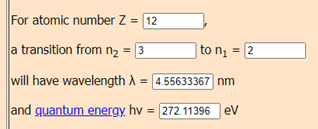WHAT IS A STELLAR CLUSTER? WHAT IS A OPEN CLUSTER?
Stellar cluster is a group of stars attracted to each other by their mutual gravity. Open clusters are disaggregated over time by their gravitational interaction with molecular clouds as they move through the galaxy, while globular clusters, which are deser, are more dense. Stable against their disintegration (although, in the long term, they also end up being destroyed).
HOW IS AN OPEN CLUSTER FORMED?
It's formation begins with the collapse of a part of a large molecular cloud. Once the molecular cloud has begun to collapse, it fragments into smaller and smaller groups, resulting in the formation of several thousand stars. Once the formation of stars has begun, the hottest and most massive will emit huge amounts of ultraviolet radiation. This radiation rapidly ionizes the surrounding gas in the large molecular cloud, causing a regionto from. The stellar winds of the most massive stars, together with the radiation pressure, direct the gases from the cloud outwards and expel them over time; after a few million years, the cluster will experience its first supernova, helping to expel the gas from the system. After several tens of millions of years, the cluster is free of gas and star formation has ended.
NGC2362


Then, I have calculated each peak's percentatge and find out which elements they contain.
I have used this formula:

-PEAK A: 930 mm2/ 3880 mm2 · 100 = 23,97 % (N) Nitrogen
-PEAK B: 480 mm2/ 3880 mm2 · 100 = 12,37 % (C) Carbonium
-PEAK C = 210 mm2 / 3880 mm2 · 100 = 5,41 % (C) Carbonium
-PEAK D = 560 mm2 / 3880 mm2 · 100 = 14,43 % (O) Oxygen
-BASE = 1700 mm2 / 3880 mm2 · 100 = 44,74 % (Mg) Magnesium
TOTAL AREA: 3880 mm2
(N) Nitrogen: 23,97%
(S) Suffer: 17,78%
(O) Oxygen: 14,43%
(Mg) Magnesium: 44,74%
With the help of this website I was able to find out what element each peak corresponds to:
http://hyperphysics.phy-astr.gsu.edu/hbase/hyde.html#c4
NITROGEN

SUFFER

OXYGEN

MAGNESIUM

I have assumed that these peaks are the elements that I have indicated, but it may be that they aren't these and that it is incorrect because, in this case, the electrons jump from layer 3 to layer 2 and this means that the temperature has to be similar environmental, and therefore is low. But if we increase the layers, the electron volts go up, and for this reason it may be that my analysis is incorrect.
http://adsabs.harvard.edu/full/1992AJ....103.1602K
- My results with those of other scientists agree that this open cluster is made of suffer and oxygen.
- In addition, I have found that this open cluster is also formed by magnesium and nitrogen. I have tried searching more scientific articles on google schoolar to see if it, actually, contains these elements, but I have not found any more elements that constitute this open cluster.
So I have opted to put these elements.